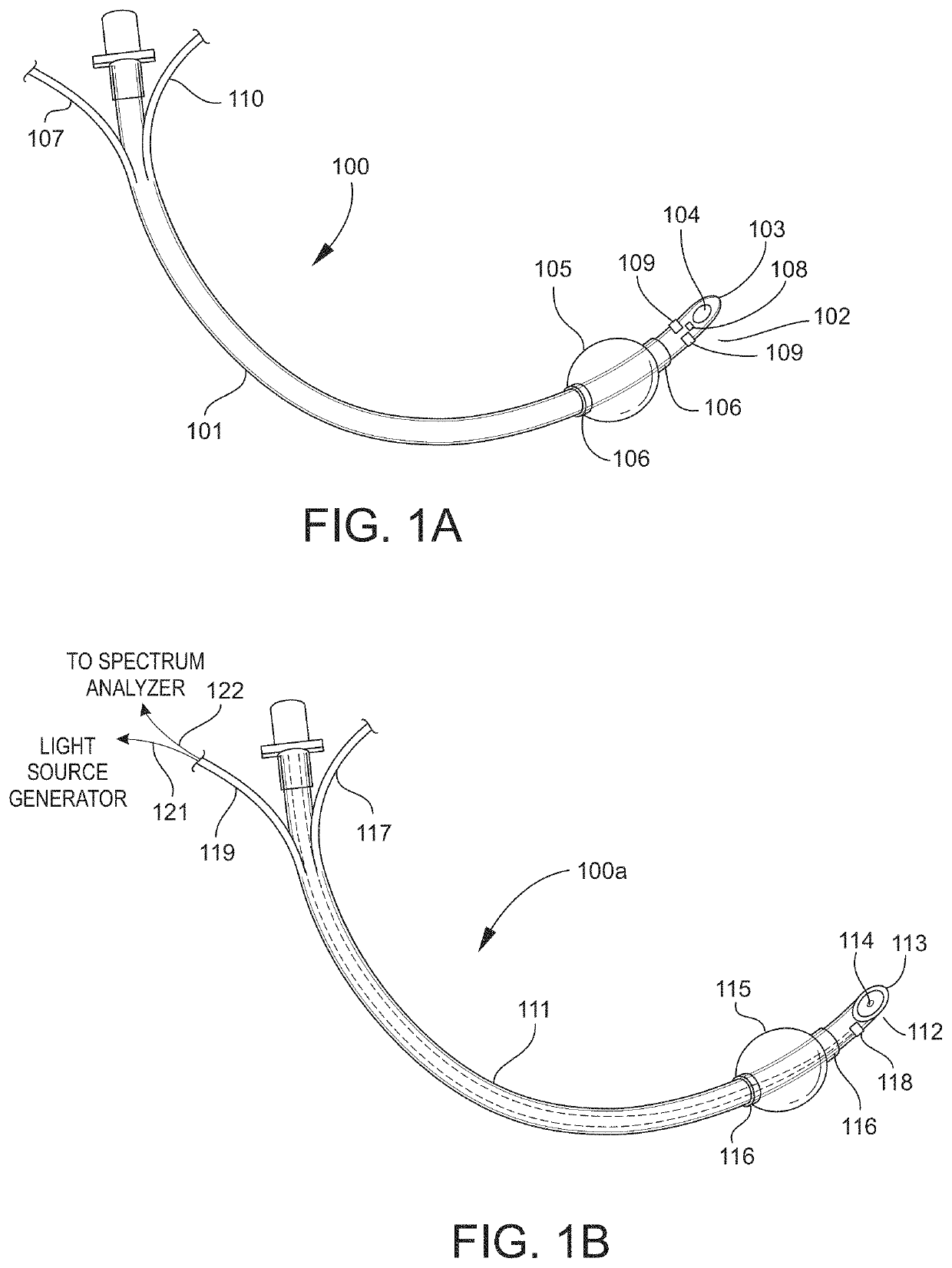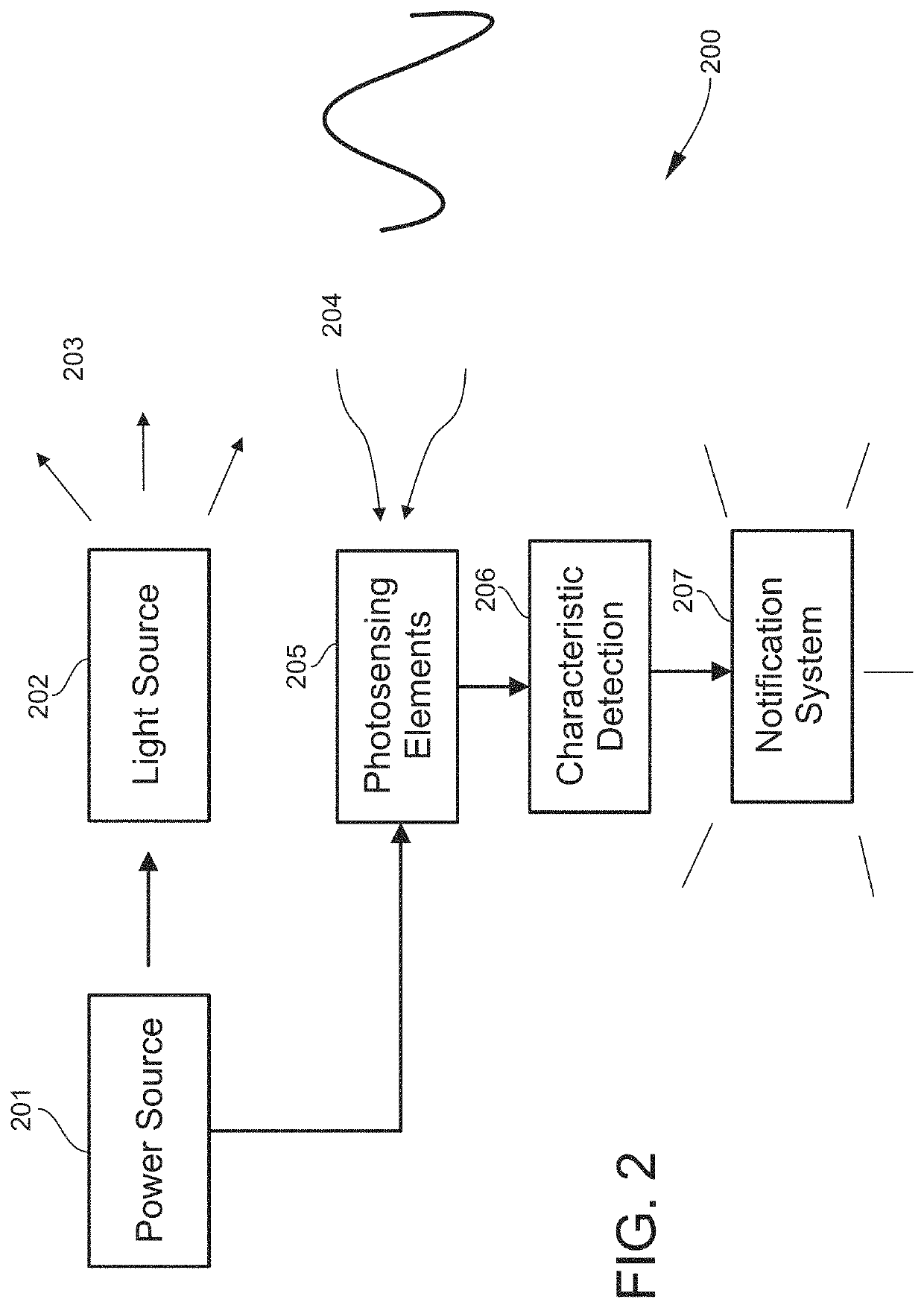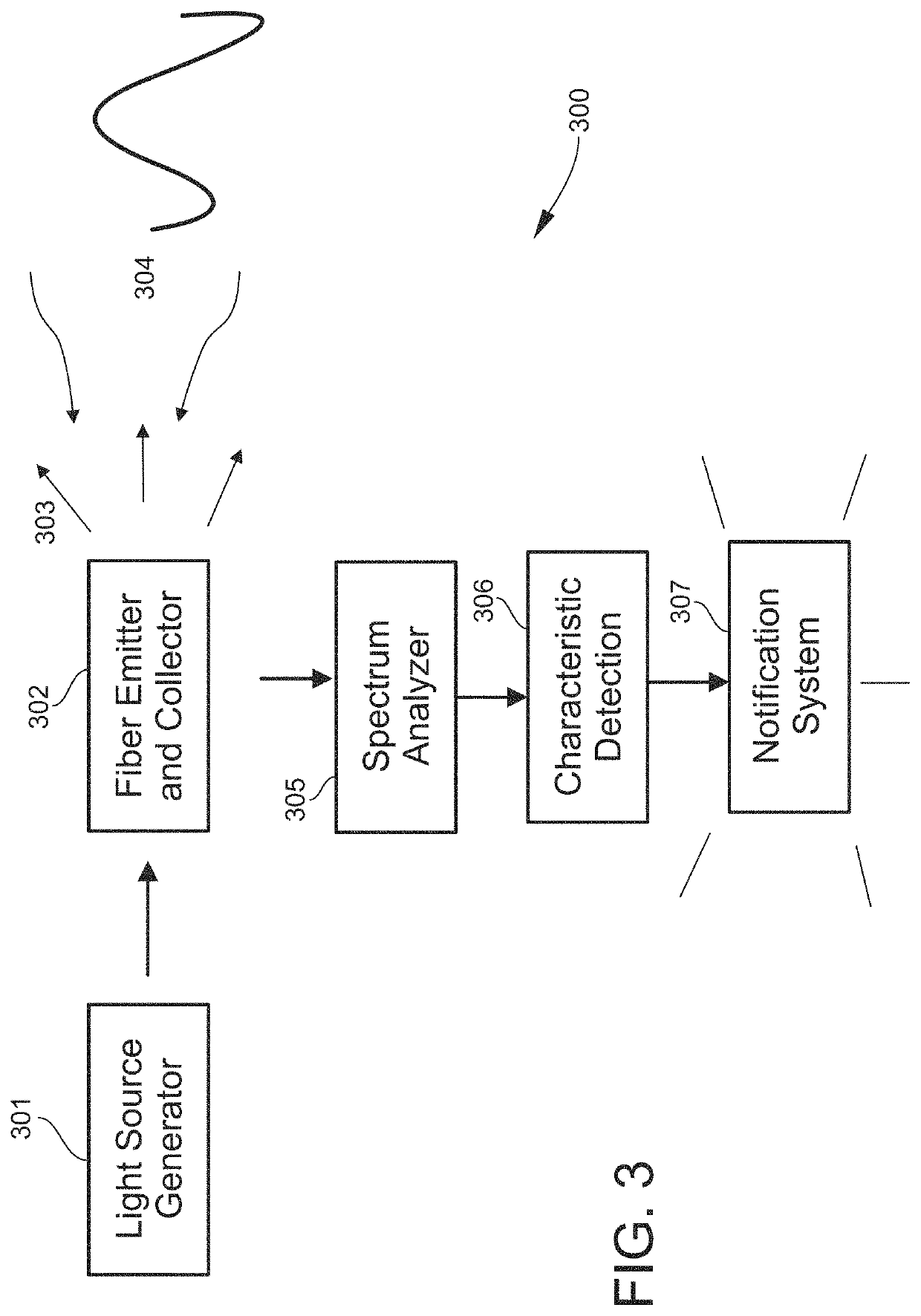Airway management device for identification of tracheal and/or esophageal tissue
a management device and esophageal technology, applied in the field of respiratory medical devices, can solve the problems of failure to intubate, death through hypoxemia or through unrecognized intubation of the esophagus, and still encounter major adverse events
- Summary
- Abstract
- Description
- Claims
- Application Information
AI Technical Summary
Benefits of technology
Problems solved by technology
Method used
Image
Examples
Embodiment Construction
[0056]A novel airway management device may be used on subjects such as humans and animals. The device includes an airway tube with a first end that is disposed external to the subject and a second end that is disposed in a portion of the subject's airway. The device may take many forms, for example, the device may be in the form of a bougie, tracheal tube, tracheostomy tube, laryngeal mask, or supraglottic airway devices.
[0057]In one embodiment, the device may be used to positively identify tracheal tissue in the subject. In another embodiment, the device may be used to positively identify esophageal tissue in the subject. In a further embodiment, the device may be used to identify one or both of tracheal tissue and esophageal tissue in the subject. The identification of tracheal and / or esophageal tissue may be based on the optical reflectance spectrum of the particular tissue. In one embodiment, the optical reflectance spectrum is in the visible light range.
[0058]FIG. 1A shows one ...
PUM
 Login to View More
Login to View More Abstract
Description
Claims
Application Information
 Login to View More
Login to View More - R&D
- Intellectual Property
- Life Sciences
- Materials
- Tech Scout
- Unparalleled Data Quality
- Higher Quality Content
- 60% Fewer Hallucinations
Browse by: Latest US Patents, China's latest patents, Technical Efficacy Thesaurus, Application Domain, Technology Topic, Popular Technical Reports.
© 2025 PatSnap. All rights reserved.Legal|Privacy policy|Modern Slavery Act Transparency Statement|Sitemap|About US| Contact US: help@patsnap.com



